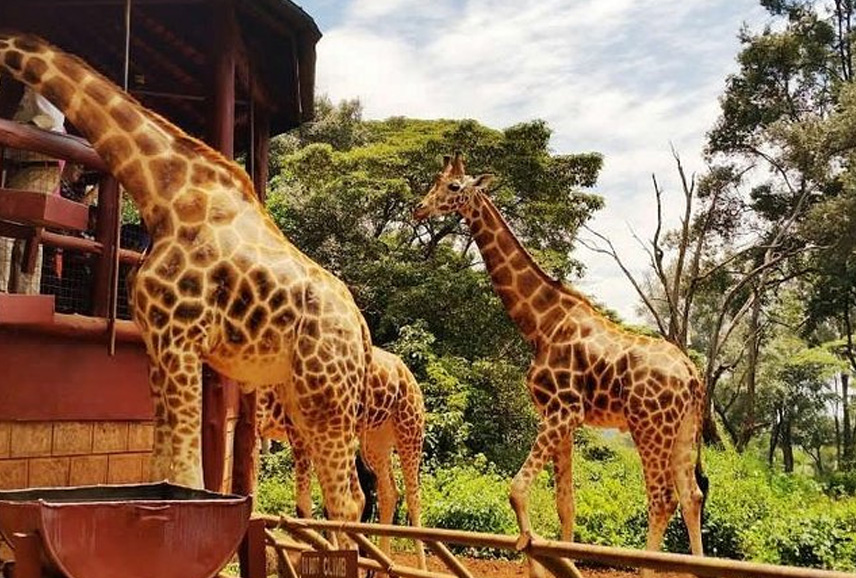You’re about to embark on an exciting journey deep into the heart of Kenya. You’ll discover the rich tapestry of tribes, immerse yourself in time-honored traditions, and join vibrant celebrations. You’ll taste mouth-watering cuisines, admire stunning traditional attire, and grasp tribal languages. Ready? Let’s explore and appreciate the cultural diversity that makes Kenya unique, while also understanding how modernization has impacted this dynamic culture.
Overview of Kenyan Tribes
You’re about to delve into the diverse and richly complex world of Kenyan tribes, aren’t you? Strap yourself in; it’s going to be an engaging ride! Kenya, that vibrant tapestry of cultures woven together over centuries, is home to more than 40 different tribes. Each one possesses its unique traditions, languages, and social structures that contribute significantly to the country’s cultural richness.
But let’s not gloss over the harsher realities. Tribal conflict has been a part of this kaleidoscopic mix for as long as anyone can remember. Tensions often stem from competition over resources or deeply ingrained historical rivalries, making peace elusive at times. But don’t misunderstand; these conflicts don’t define the tribes but rather underscore their resilience and capacity for change.
The colonial impact on Kenyan tribes also cannot be overlooked. The British rule dramatically altered tribal dynamics by imposing new borders and systems of governance. This interference disrupted traditional ways of life and sowed seeds of discord that have shaped tribal relations even today.
Yet despite these trials, Kenyan tribes remain proud custodians of their heritage while continuously adapting to changing circumstances. They’ve shown remarkable strength in preserving their distinct identities amidst external influences and internal strife.
Deep Dive Into Kenyan Traditions
You’re about to embark on a thrilling journey, diving deep into the heart of Kenya’s rich cultural tapestry. You’ll unravel the mysteries of Kenyan rituals, immerse yourself in their vibrant celebrations and partake in their unique festivities. It’s an adventure that promises not only knowledge but also a deeper appreciation for Kenya’s diverse heritage.
Understanding Kenyan Rituals
It’s essential to grasp the importance and depth of Kenyan rituals in order to fully appreciate the country’s rich cultural tapestry. Ritual Symbolism and Ancestral Worship play significant roles, adding layers of profound meaning.
- Ritual Symbolism: Every ritual has symbols with deep significance; a dance step might honor the bravery of warriors or a song might celebrate bountiful harvests.
- Ancestral Worship: In Kenya, ancestors are revered and honored through various practices, ensuring their legacy lives on.
- Community Bonds: These rituals strengthen community ties, fostering unity and mutual support among its members.
- Cultural Preservation: They’re not just mere traditions; they’re living embodiments of Kenyan history, safeguarding its heritage for future generations.
Celebrations and Festivities
In your travels, you’ll encounter numerous festivities that are as vibrant and diverse as the nation itself. Let’s dive into the festival significance in Kenya. They’re not just a fun time; they’re deeply ingrained in Kenyan culture, often representing historical events or spiritual beliefs.
Understanding the event chronology is essential to fully appreciate these celebrations. Many follow agricultural cycles or lunar calendars, reflecting the close relationship between nature and Kenyan traditions. You might start with Mashujaa Day, honoring national heroes, then experience the rhythmic beauty of Lamu Cultural Festival later on.
As you immerse yourself in these festivities, you’ll feel an authentic connection to Kenya’s rich heritage. So get ready for a cultural adventure like no other!
Highlighting Major Cultural Celebrations
Let’s delve into the vibrant cultural celebrations that make Kenyan tribes unique and fascinating. These events are more than just a spectacle; they’re an embodiment of festival significance and a tool for cultural preservation. As you navigate the various tribal festivities, you’ll discover deep-rooted traditions manifesting in spectacular ways.
Here are four key celebrations that truly encapsulate this:
- Maulidi Festival: Held annually in Lamu, this Islamic celebration marks Prophet Muhammad’s birth. You’ll witness captivating spiritual rituals, traditional dances, dhow races and much more.
- Champagne Pool Party: This isn’t your typical pool party! A yearly event by the Samburu tribe to mark the start of their dry season – it involves herding cattle into muddy pools created by heavy rains.
- Luo Festival: An ode to Luo music, language and arts; it’s an exhilarating platform for artists from all generations to perform traditional Luo music while showcasing their vibrant culture.
- Maralal Camel Derby: Kenya’s best-known festival abroad where both local tribesmen and international competitors participate in camel races across harsh terrains—a thrilling experience!
These festivals aren’t merely about fun; they serve as platforms for cultural preservation by keeping traditions alive among younger generations while promoting unity among diverse tribes. The significance of these festivals lies not only in their entertainment value but also their role in preserving culture—making them symbolic threads that weave together Kenya’s rich tribal tapestry.
Understanding Kenyan Tribal Languages
Dive into the rich tapestry of Kenyan tribal languages, each one a treasure trove of cultural heritage and identity. You’ll explore how these dominant tribal tongues are being preserved in a rapidly globalizing world, understanding not just their survival but also their flourishing. Then you’re off to delve deeper into how language shapes culture, giving life to traditions and shaping the worldview of its speakers – an adventure into the heart of Kenya’s linguistic landscape!
Dominant Tribal Languages
Swahili and English aren’t the only languages you’ll encounter in Kenya, there’s a rich tapestry of tribal languages that also play a significant role. Language evolution is evident here, as these tribal dialects have evolved over centuries while still maintaining their unique characteristics.
- Kikuyu: The language of the Kikuyu people, Kenya’s largest ethnic group.
- Luo: Spoken by the Luo tribe who are known for their musical and artistic flair.
- Kalenjin: This language belongs to the athletic tribe famous for producing marathon runners.
- Luhya: A collection of dialects from Western Kenya tribes.
Each language offers a unique window into its tribe’s customs and values. So, don’t just stop at ‘Jambo,’ dive deeper into Kenya’s linguistic diversity!
Language Preservation Efforts
You’ll find that efforts to preserve these tribal languages are critical in preventing their extinction and maintaining linguistic diversity. Picture yourself amidst the bustle of an ongoing language revitalization project, where tireless linguists engage with community elders, plunging into a thrilling race against time. It’s here that digital archiving plays a pivotal role. Through high-quality recordings and meticulous documentation, fading dialects get a new lease on life.
Imagine the power you hold when you scan through centuries-old lexicons on your screen! This is not just about preserving words; it’s about safeguarding histories, traditions, identities. So join this adventure – every click, record or share counts in this bold mission of cultural preservation. You’re not just witnessing history; you’re helping to write it.
Linguistic Influence on Culture
Consider how deeply language influences your perception of the world around you, shaping not only your thoughts but also your social interactions and even your values. The interplay between language evolution and cultural expressions is like a thrilling safari through time, marked by diverse paths.
- Language as Identity: Your mother tongue connects you to your roots, making it an identity marker.
- Cultural Expressions: Language carries stories, proverbs, songs—cultural jewels that define societies.
- Language Evolution: Just as landscapes change over time, languages evolve too, adopting new words and shedding old ones – a fascinating journey of adaptation.
- Language Loss: When a language fades away, we lose more than words; we lose a culture’s unique lens on life.
Dive in! Explore this linguistic adventure and cherish the richness it brings to our shared human experience.
Kenyan Traditional Dress and Adornments
In Kenya, you’re likely to encounter an array of vibrant traditional dress and adornments that reflect the country’s rich cultural diversity. Each tribe has its unique style, deeply rooted in ancient customs. Here, every piece of clothing isn’t just a fashion statement but carries profound dress symbolism that communicates various aspects about the wearer such as age, marital status, wealth and social rank.
The Maasai tribe is renowned for their striking red Shuka cloths and intricate beadwork. The red color signifies power and ferocity; it’s a warning to predators that they’re no easy prey. Their beadwork is not merely decorative; each color has a different meaning – white symbolizes purity while blue represents the sky which provides water for their cattle.
Adornment significance in Kenyan culture extends beyond clothing. For instance, the Kikuyu women wear large earlobe discs as a sign of beauty and social standing. Men from Turkana tribe sport ostrich feather headdresses to denote bravery in battle.
Your eyes will be drawn to Samburu warriors with their colorful cotton wraps known as ‘shukas’, adorned with intricate necklaces made from beads and ostrich egg shells – each layer tells a tale of personal achievement or heroic feat.
Food and Cuisine of Various Kenyan Tribes
Exploring the local cuisines, you’ll discover a variety of dishes that mirror the diversity of the country’s many different communities. Kenya’s culinary landscape is rich with regional variations and unique culinary techniques that reflect its tribal cultures. From hearty stews to sweet desserts, each dish tells a story about its community.
Here are four dishes you should try:
- Ugali: This staple food is made from cornmeal and water. It’s versatile, pairing well with different sauces or meats. The Kikuyu tribe often serve it with mashed peas and potatoes known as “mukimo”.
- Sukuma Wiki: A popular dish among the Luo tribe, this nutritious stew combines collard greens with onions, tomatoes, and spices.
- Nyama Choma: Literally translated as “roasted meat”, this delicacy is enjoyed by tribes across Kenya. Different regions have their own twists on the cooking technique.
- Mandazi: These Swahili doughnuts are lightly spiced with cardamom and coconut milk for a delightful treat.
These aren’t just meals; they’re cultural experiences shaped by centuries-old traditions and adapted to modern times through creative culinary techniques. Each region adds its own flavor – be it through unique ingredients or distinctive cooking methods – making every meal an adventurous journey into Kenya’s diverse culture.
The Role of Elders in Kenyan Tribes
You’ll find that the role of elders is crucial within these communities, they’re considered the keepers of wisdom and are deeply respected. Their tales echo across time, narrating a history rich in culture and tradition. They hold court under ancient trees, their words flowing like rivers through the heart of Kenyan tribes. This elderly wisdom isn’t just for show; it’s a vital tool in preserving culture and heritage.
These venerated individuals aren’t mere storytellers; they’re judges, mediators, educators – guiding forces who navigate the tribe through life’s many challenges. Look closer and you’ll discover that every wrinkle earned over the years tells a story of resilience and survival.
Inter generational communication plays an integral role here. It’s not uncommon to see young ones huddled around an elder, eyes wide with curiosity as they absorb lessons from days gone by. These interactions bridge gaps between generations while cementing cultural identity amongst the youth.
In this dance between past and present lies an adventure like no other! You marvel at how traditions have survived centuries unscathed – passed down faithfully from one generation to another. You’d be amazed at how traditional knowledge on farming practices or medicinal herbs remains relevant in today’s world!
The Impact of Modernization on Kenyan Culture
As we leave the hallowed halls of wisdom held by the elders, let’s venture into the bustling metropolises and dive headfirst into how modernization is changing Kenya’s vibrant cultural landscape. Yes, you’re right! Our journey now takes us through ‘The Impact of Modernization on Kenyan Culture’.
Urbanization effects in Kenya are as visible as the sun setting over Nairobi. Although it brings progress, it also creates a melting pot culture where traditions sometimes blur or fade away. The impact isn’t entirely negative though; there are silver linings to this cloud.
Cultural globalization has swept over Kenya like a wave, dramatically altering its traditional norms. Here’s what you need to know:
- Language: Many Kenyans are adopting English or Swahili at home, sidelining tribal languages.
- Fashion: Western-style clothing is becoming more favored over traditional attire except for special occasions and festivities.
- Music and Dance: While traditional music and dance remain beloved, international genres like pop, hip hop, and reggae have gained significant popularity.
- Food: Traditional dishes still hold sway but fast food outlets serving western cuisine are sprouting up across urban areas.
This shift doesn’t mean that Kenyan culture is disappearing – quite the contrary! It’s evolving with time while maintaining strong roots in tradition.
So here’s your challenge: immerse yourself in both worlds! Savor Ugali at a roadside stall then grab a burger downtown; enjoy local Afro-pop beats then switch to global chartbusters; learn some Swahili phrases even if everyone around you speaks perfect English!
Remember – change isn’t always bad; sometimes it just adds more flavors to our cultural stew!

































